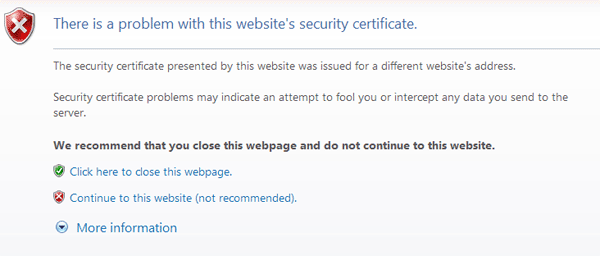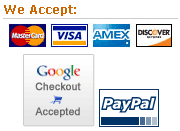Archive for June, 2008
Using non-core products as a loss leader!
One of the best ways (If done properly) to add additional revenue to your ecommerce sales is to sell non-core products (at cost or even at a loss) to gain additional core sales and new customers.
A great example that I found this weekend, is B&H Photo. They sell a variety of non-photography related computer and technical products. What quickly caught my attention is that many these products are being sold well below any other online retailer’s price, even cheaper than anyone on eBay. I don’t have access to wholesale computer accessory costs, but I imagine that they aren’t making much money, if any, on their computer product sales.
So how is this smart marketing?
When an established website like B&H draws sales from non-core products, they gain additional customers and brand exposure. What they gain by selling at cost, is the opportunity to sell other products for profit, and they gain repeat customers. In the end, if the amount of money spent marketing and supporting non-core products is minimal, there is absolutely no downside to this practice. If they aren’t making money from those computer related sales, they’re making money from those additional customers that are also interested in cameras, memory cards, photography accessories, and more computer accessories.
A good idea for some but not for everyone:
This practice can be a strong marketing technique, however, it will not create a sustainable business model for everyone. A businesses that can most effectively harness this technique must have a strong search engine presence, or the ability to draw sales and traffic at little to no additional cost. This technique is probably not a good idea for a startup business unless you really know what you are doing. A business must also have access to related but non-core products at a very competitive price.
Obvious potential pitfalls:
- Some strong reserve must be used to not cannibalize existing profit margins, as it extremely easy to sell short on everything. Don’t make everything a loss leader, only those non-core products that you are adding.
- Another danger is accidentally migrating from one core product type to another. It needs to be clear to yourself and to your customers what your business is there to do. If you are a photo shop, that sells some computer accessories, it should be clear that you are not a computer accessory seller that has some photography equipment. This is absolutely key in protecting your brand, and sustaining your business model.
- The other products that you decide to sell must be related to what your business does. If would make no sense for an online flower shop to start selling car parts. You need to be careful not to dilute your brand, message, and what it is you currently do with completely unrelated products.
- You do not ever want to enter an arena that will create a lot of additional customer support requests. This is a quick way to nullify any gain you get from additional customers and sales.
The big picture:
It’s sometimes difficult to grasp the concept of loosing money on one place to gain money in another. If you have the ability to step back and look at the big picture, you will find that there are numerous areas where a loss here can create a huge gain somewhere else. Small steps should always be taken when testing out a system that has both the potential for a loss and a gain, but I think that many will find that this is a useful, appropriate, and completely possible marketing technique.
Don’t lose sales from these 5 stupid mistakes!
Some of the most simple mistakes will undoubtedly lose your website sales. What’s most unfortunate about these mistakes, is that you probably had a guaranteed sale until you irritated or scared your customer enough for them to find another store to shop at.
Mistake 1 (Old dates and information):

The internet is a very dynamic machine. When a visitor shows up on your website and sees your copyright date “Copyright © Anything < This Year” it instantly brings up questions. Are these prices still correct? Is this company even in business?
Unless your website has an enormous amount of perceived trust and you have a very strong brand (in which case your copyright date would most definitely be current), you will undoubtedly lose sales from this date alone.
The same thing goes for about us pages, and other information pages that can be date specific. If your about us page states that you specialize in computers with Windows 98, and Windows 2000 while Windows Vista is the current release, it brings up questions to which there is no good answer.
Mistake 2 (SSL related error messages):
I come across sites on a daily basis that serve up secure pages with some problem in their SSL configuration. When you send a visitor to a SSL protected page, there is a good reason for it. And, when an error message precedes that secure connection, all confidence in your security is lost. If you can’t figure out how to properly encrypt a website / page / sub-domain without errors, you need to hire someone who can.
Does this make you want to continue checking out?

Also, to help prevent this from ever happening, make sure you do not permanently install mis-configured ssl certificates. If you do get a ssl error, make sure not to click the permanently allow this connection option.
Mistake 3 (Not showing payment and shipping options immediately):

You should display your accepted payment methods on every page of your website! Don’t make your customer click on the about us, faq, or any other link to get this information. I’ve got securely hosted credit card logos here, if you need them.
You should display the shipping options and prices as soon as technically possible, on the shopping cart page is best! Also, do not make your user enter all of their shipping or billing information, (or worse yet, make them register) before you give them shipping prices. Much of the time, your customer won’t even consider filling out that much information just to get an idea of how much shipping will cost.
Use a single zip field to calculate shipping and ask for the rest of their information further in the checkout process.
Mistake 4 (Improper add-to-cart functions):
With the Web 2.0 craze going on, it’s common to see spiffy Ajax and dynamic add to cart functions where some small area of the website is updated when an item is added to a shopping cart. This is not only a bad idea, but it can be usability suicide.
While these actions may seem obvious to you, a lot of users don’t notice a small box being updated, and it’s rarely what a shopper is expecting to happen. It’s always best to redirect your user to a shopping cart each time they add something to it. You can then provide a return to last item / category / brand or whatever else link from the shopping cart page as needed.
Mistake 5 (Poor internal search):
Google became popular because their search results were quick, and highly relevant. Search function on your website is extremely important, and should be quick and relevant. You need to be able to account for things like misspellings and incomplete words. If you don’t have the ability to implement a solid search function yourself, you should look for a 3rd party application to use. If your website is well indexed, Google offers a custom search engine that you can integrate into your website.
The only thing worse than showing bad search results is showing none at all.